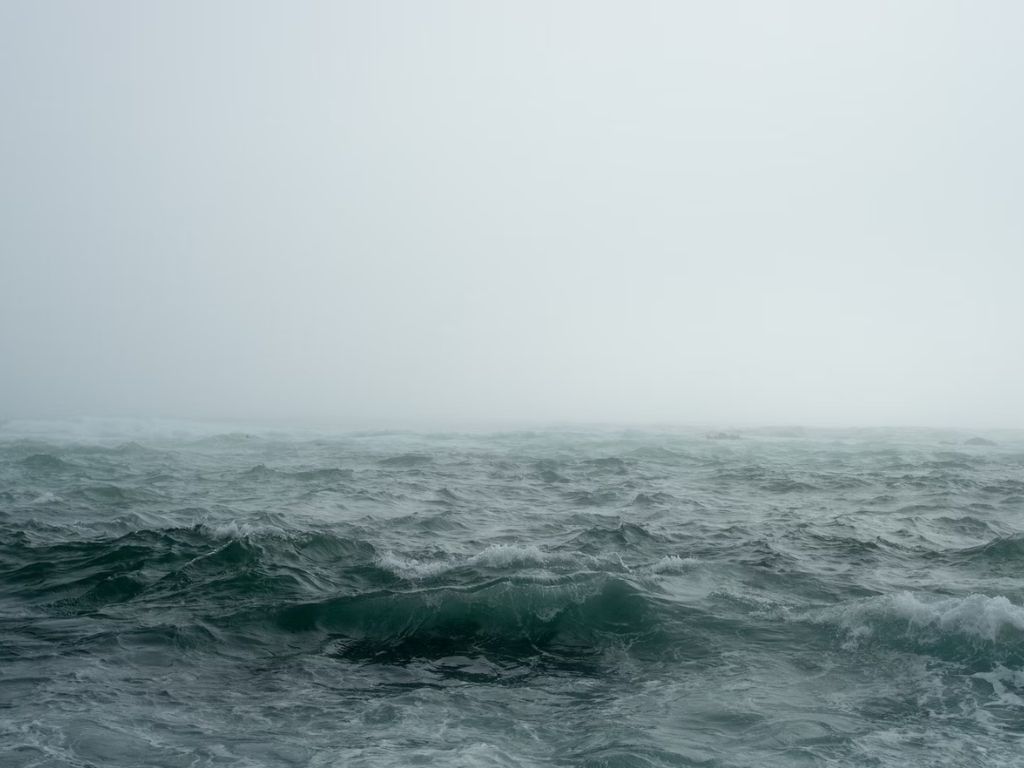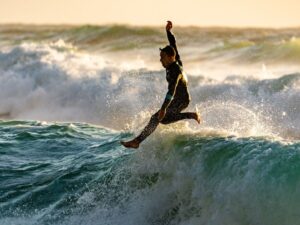The thing about our fast-paced culture these days is that [obviously] nobody likes to wait. And while chasing that aesthetic, we need to remember the reasoning behind some important rules.
For example, consider the debate about surfing after a downpour. You may not know why it’s not allowed, but you know you shouldn’t do it. And that lack of information is leading some over-enthusiast newbies into the ocean.
While hitting the waves immediately after a rainstorm might be tempting, it’s dangerous.
Generally, you shouldn’t surf after it rains because the runoff can increase pollution, bacteria levels, and hazardous currents in the ocean. It could lead to bacterial infections and exposure to harmful chemicals. To reduce the risks, you should wait at least 72 hours after heavy rainfall before surfing.
Additionally, it’s not just the health risks you must consider. Invasive species can be introduced into the ocean through stormwater runoff, and pollutants and other hazards can harm marine life.
What happens to the ocean after it rains?
After rainfall, the ocean undergoes several changes that can harm the environment and anyone who enters the water.
I. Runoff pollution
Rainwater that flows over streets, parking lots, and other surfaces picks up pollutants such as oil, fertilizers, and trash, eventually reaching the ocean. This can cause a significant increase in bacteria levels, leading to illnesses such as gastroenteritis, ear infections, and skin rashes.
- Algae bloom: It can create excess nutrients, leading to harmful algae blooms. These blooms can deplete oxygen in the water and create a toxic environment for marine life.
- Dead zones: It can also create areas in the ocean with little to no oxygen. These areas can harm marine life and disrupt ecosystems.
- Contaminated shellfish: Runoff pollution can contaminate shellfish, making them dangerous to eat. This leads to illnesses such as hepatitis A and norovirus.
II. Increased bacteria levels
Rainfall can increase the number of bacteria in the ocean, making it dangerous for humans to swim or surf. Runoff pollution can wash sewage overflows, animal waste, and other sources of bacteria into the ocean.
This bacteria can cause a range of illnesses, including:
- Gastrointestinal illness: Bacteria such as E. coli and salmonella can cause diarrhea, vomiting, and other gastrointestinal problems.
- Skin infections: Bacteria such as staph and strep can cause skin infections such as impetigo and cellulitis.
III. Dangerous currents
Rainfall can also create dangerous rip currents that can be hazardous for surfers and swimmers.
Stormwater runoff can create fast-moving currents that can be difficult to swim against, leading to drowning and other injuries. Rip currents can also form after heavy rain, creating powerful undertows that pull swimmers out to sea.
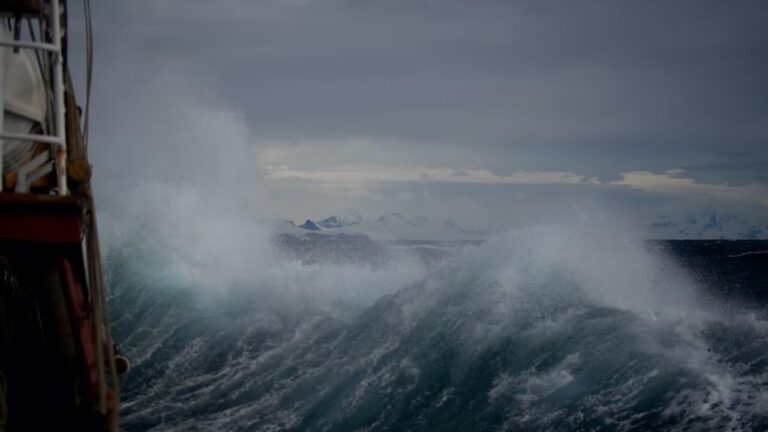
IV. Harmful chemicals
Rainwater can pick up harmful chemicals from sources such as pesticides, oil spills, and industrial runoff, which can be dangerous to humans and marine life. Exposure to these chemicals can lead to life-long problems such as cancer and reproductive issues.
V. Debris
Heavy rainfall can also increase ocean debris, including litter and waste from storm drains. This debris can be hazardous to surfers and marine life, as it can cause injury or entanglement.
What are the health issues caused by surfing after it rains?
Bacterial infections are a significant concern when surfing after it rains.
Rainwater can carry sewage and other bacteria from the land into the ocean, increasing harmful bacteria. Surfers who come into contact with this water may develop skin, eye, ear, and respiratory infections.
One of the most common bacterial infections associated with surfing after it rains is called “swimmer’s ear.” Swimmer’s ear is an outer ear canal infection that can cause pain, itching, and inflammation.
It’s caused by exposure to water that contains bacteria and can be especially prevalent after heavy rainfall. You can reduce the risk of developing a swimmer’s ear by wearing earplugs and avoiding submerging their heads in the water.
Another bacterial infection is staphylococcus aureus. This type of bacteria is commonly found on the skin, but when it enters the body through a cut or wound, it can cause a serious infection. Staph infections can be difficult to treat and may require antibiotics.
Studies have shown that there is a clear link between rainfall and increased bacteria levels in the ocean.
One study by researchers at the University of Miami found that rainfall was associated with a 15% increase in the risk of contracting a bacterial infection while surfing. Another study by the Environmental Protection Agency found that 75% of beach closures and advisories were due to elevated levels of bacteria after rainfall.
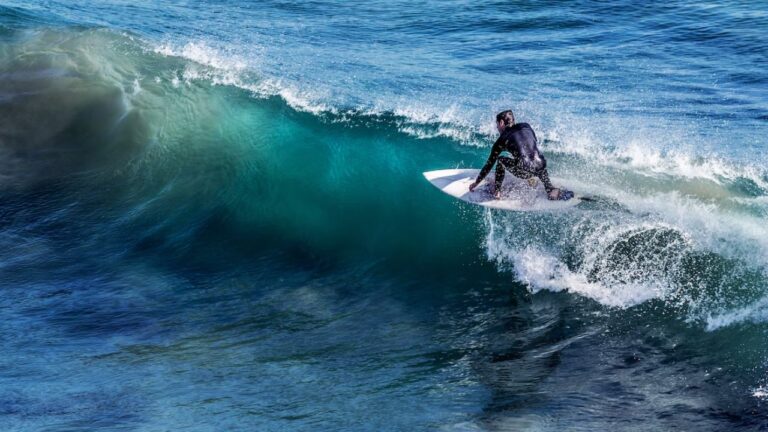
One study in California found that surfers who entered the water after a rainfall event were likelier to report symptoms such as nausea, diarrhea, and skin rashes than those who surfed during dry weather conditions.
The study also found that levels of fecal indicator bacteria, which are used to measure the presence of sewage in the water, were significantly higher after a rainfall event.
Another study in Hawaii found that surfers who entered the water after a rain event were likelier to develop a skin rash than those who surfed during dry weather conditions.
The study concluded that surfers who entered the water after a rain event were at a higher risk of developing skin infections and should take precautions to protect themselves.
How does surfing after rain affect the environment?
One of the major environmental impacts of surfing after it rains is the introduction of invasive species. Heavy rainfall can cause the erosion of soil and rocks, which carries debris and other materials into the ocean. This debris can transport non-native species that may harm the local ecosystem.
When these species are introduced to a new environment, they can rapidly reproduce and outcompete the native species, causing significant damage to the local ecosystem.
Another environmental impact is on marine life. The toxic runoff from urban areas and agricultural land can contain chemicals harmful to marine life. These chemicals can cause algal blooms, which can deplete oxygen levels in the water and suffocate fish and other marine creatures.
Additionally, the runoff can contain pesticides, fertilizers, and other chemicals that can harm marine life, causing significant damage to the food chain.
Rainwater can also pick up pollutants from oil, gasoline, sewage, and other waste. When these pollutants are introduced into the ocean, they can harm marine life and affect water quality. In addition, they can also pose a threat to human health when consumed or when exposed to the skin.
A study conducted by the Surfrider Foundation found that the water quality in many areas of the US worsens after a rain event. The study found a significant increase in the level of bacteria and other contaminants in the water after a rain event.
Another study in Australia found that the number of pollutants in the water increased after a rain event, which threatened the marine ecosystem.
What precautions should you take for surfing after rain?
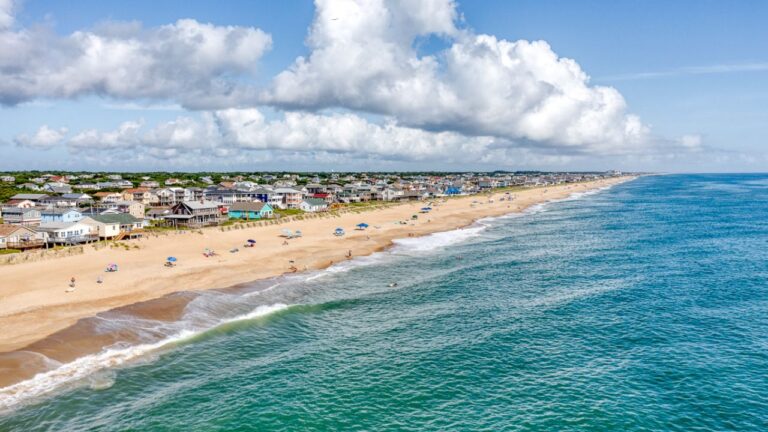
I. Wait a few days.
Waiting will allow the ocean to naturally filter out pollutants and harmful substances that may have been introduced during the rain.
In fact, some beaches even have waiting periods in place after heavy rainfall to ensure the water is safe for recreational activities. Check with your local beach authority to see if any waiting periods are in effect.
II. Check water quality reports.
Many beaches have monitoring programs that test the water for bacteria, toxins, and other pollutants.
You can find this information on the beach’s website or by calling the local authority. If the water quality is poor, it’s best to avoid surfing until it’s safe again.
III. Wear protective gear.
Wearing protective gear can also help reduce your exposure to harmful substances while surfing after rainfall.
This includes a wetsuit, booties, and gloves to protect your skin from bacteria and other pollutants in the water. It’s also a good idea to wear a face mask to reduce inhalation of harmful substances.
IV. Take a shower after surfing.
After surfing, shower thoroughly to remove any bacteria or pollutants that may have accumulated on your skin. This will also prevent that.
V. Reduce your environmental impact.
Avoid using soaps, shampoos, or other personal care products that can contribute to water pollution. Also, be mindful of your waste and properly dispose of trash or recyclables.
VI. Spread Awareness.
Many people may not be aware of the potential dangers, and by educating others, we can all work together to reduce our impact on the ocean and protect our health.
Expert QnA
Q. Is it ever safe to surf after it rains?
It’s best to avoid surfing for at least a few days after heavy rain, as the risks of pollution and dangerous conditions can persist even after the rain has stopped. It’s a good idea to check water quality reports and other local advisories before heading out.
Q. Is it safe to swim in the sea after a storm?
Generally, you shouldn’t swim after the rain. Storms can cause an increase in water pollution, debris, and dangerous currents, making swimming hazardous. Additionally, storms can stir up marine life and increase the chances of encountering jellyfish, sharks, or other potentially dangerous creatures.
It’s best to wait a few days after a storm to allow the waters to calm down and for any pollution or debris to dissipate. It’s also good to check local beach advisories and warnings before swimming after a storm.
Q. How many days after rain can you swim in the ocean?
The amount of time you should wait to swim in the ocean after rain depends on various factors, such as the amount and intensity of the rain, the location, and the level of pollution in the water.
Generally, waiting at least 24-48 hours after rainfall before swimming in the ocean is recommended to reduce the risk of exposure to harmful pollutants and bacteria. However, it’s always best to check local water quality reports and take precautions to ensure safe swimming conditions.

